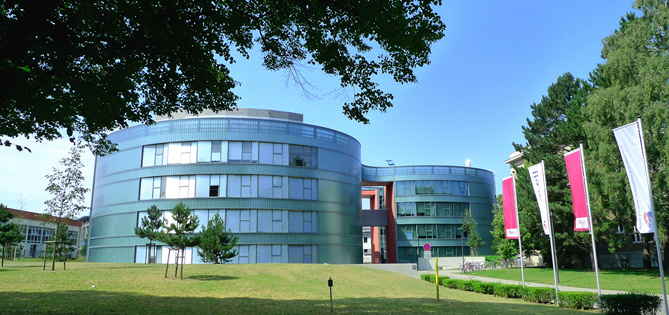J Virol. 2003 Jul;77(13):7677-81.
Replication-competent hybrids between murine leukemia virus and foamy virus.
Shikova-Lekova E, Lindemann D, Pietschmann T, Juretzek T, Rudolph W, Herchenröder O, Gelderblom HR, Rethwilm A.
Replication-competent chimeric retroviruses constructed of members of the two subfamilies of Retroviridae, orthoretroviruses and spumaretroviruses, specifically murine leukemia viruses (MuLV) bearing hybrid MuLV-foamy virus (FV) envelope (env) genes, were characterized. All viruses had the cytoplasmic tail of the MuLV transmembrane protein. In ESL-1, a truncated MuLV leader peptide (LP) was fused to the complete extracellular portion of FV Env, and ESL-2 to -4 contained the complete MuLV-LP followed by N-terminally truncated FV Env decreasing in size. ESL-1 to -4 had an extended host cell range compared to MuLV, induced a cytopathology reminiscent of FVs, and exhibited an ultrastructure that combined the features of the condensed core of MuLV with the prominent surface knobs of FVs. Replication of ESL-2 to -4 resulted in the acquisition of a stop codon at the N terminus of the chimeric Env proteins. This mutation rendered the MuLV-LP nonfunctional and indicated that the truncated FV-LP was sufficient to direct Env synthesis into the secretory pathway. Compared to the parental viruses, the chimeras replicated with only moderate cell-free titers.
Vorheriger Beitrag
Improved treatment of pancreatic cancer by IL-12 and B7.1 costimulation: Antitumor efficacy and immunoregulation in a non-immunogenic tumor model.
Nächster Beitrag
Construction and characterisation of a full-length infectious molecular clone from a fast replicating, X4-tropic HIV-1 CRF02.AG primary isolate.

Kontakt
Institut für Experimentelle Gentherapie und Tumorforschung
Core-Facility Virale Vektor & Genom-Editing Technologien
Biomedizinisches Forschungszentrum
Schillingallee 69
D-18057 Rostock
Sekretariat
Ingrid Winkler
(+49) 381 494-5066(+49) 381 494-5062
ingrid.winkler@med.uni-rostock.de
Department Leben, Licht & Materie
Forschungsbau LL&M
Albert-Einstein-Str. 25
D-18059 Rostock
Forschungsbau LL&M
Albert-Einstein-Str. 25
D-18059 Rostock




